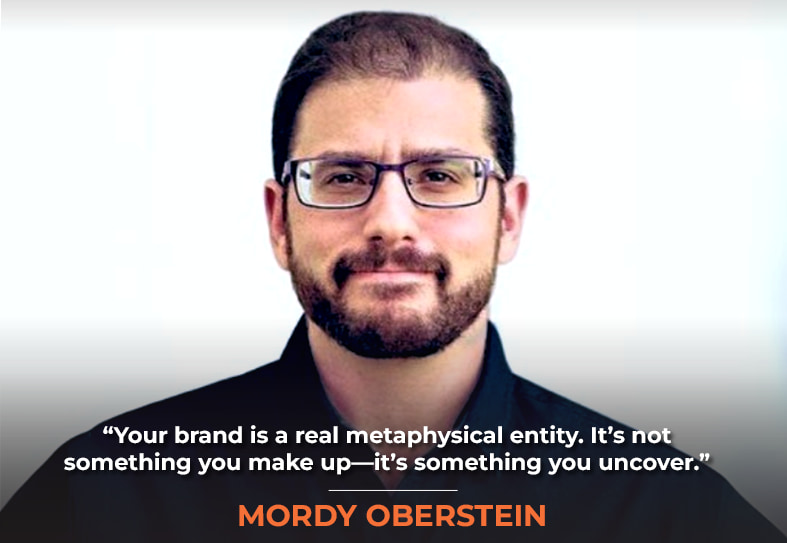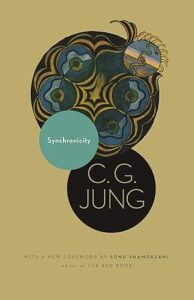What happens when brands disconnect from their core identity? Mordy Oberstein, my guest on today’s show, approaches marketing as existential therapy. Founder of Unify and communications advisor for Semrush, Mordy views brands as entities with real identities and selfhood, helping companies recognize and articulate who they truly are beneath surface-level messaging.
In our conversation, Mordy and I discuss how successful brands maintain narrative continuity while evolving, examining both triumphs and failures from Super Bowl advertising to Jaguar‘s identity struggles. Mordy shares powerful examples of brands that overreact during crisis moments, losing connection with their audience by abandoning their history. He explains why advertising decisions made during “existential crises” often amplify problems instead of solving them and offers a therapist’s perspective on brand recovery. This sparks a fascinating dive into philosophical territory, where we connect Jewish existentialist wisdom with modern branding challenges and discover the surprising relevance of Carl Jung’s ideas about meaning and synchronicity to authentic marketing.
Uncover why superficial emotions in advertisements don’t create lasting impressions while messaging centered on deeper human experiences forges powerful bonds with audiences. This is a fun and thought-provoking conversation. Enjoy!

In This Episode
- [03:45] – Mordy Oberstein explains his brand consultancy, Unify, and its focus on unifying brand and performance marketing.
- [05:44] – Mordy and Stephan discuss the high costs of Super Bowl ads and the often poor quality of the ads.
- [17:42] – Mordy uses Jaguar as an example of a brand in crisis, explaining how Jaguar overreacted to its perceived problems by launching a campaign that was out of touch with its brand history.
- [22:11] – Mordy discusses the therapeutic approach to branding, likening brand marketers to therapists who help brands tap into their true selves.
- [26:41] – Mordy and Stephan discuss the role of AI in branding and marketing, with Mordy expressing skepticism about the hype surrounding AI.
- [33:59] – Stephan and Mordy delve into the concept of existential crisis, discussing how it relates to both personal and brand identity.
- [42:35] – Mordy shares insights on how Jewish philosophy can inform branding and marketing, focusing on deeper human experiences and meaningful connections.
Mordy, it’s so great to have you on the show.
Yeah, thanks for having me. I’m really excited.
Yeah, so we’ve known each other for a number of years. I don’t know, at least five or six or something. We’ve met in person, and I think the first time we met you was at Rank Ranger. Is that right?

Yeah. I think we might have. The first time I met him was at a BrightonSEO conference. I’m trying to remember. I think you signed a copy of my book. Well, a copy of your book, rather. I was holding the book, but it’s your book.
Yeah, funny; it would have probably been 2017 or 16 or something like that.
Something like that, yeah. Wow, now you make me feel older. I am older.
Yeah, age is a state of mind. So you were at Rank Ranger for how long?
Four and a half years, something like that.
Okay, are they still around, or did they get acquired, and what happened?
They were acquired by Similarweb. So I don’t know exactly what’s happening with them. I think they’ve integrated as if their blog content got moved over to a Similarweb. There’s still a standalone tool, but I think I saw somewhere that they’re trying to be fully integrated into a Similarweb platform. I could be making that part up. Yeah.
Okay, all cool. Congratulations to the founder. What’s his name, Shay?
Yeah.
Cool. So now you are doing your own thing. It’s a brand consultancy. Like, what makes you the only one? There are a lot of brand consultancies out there.

Yeah. Yep.
See, I kind of made that a branding question. Do you like that?
Yeah, I do like that. I would really like to know my point of differentiation really clearly. And I do. I do. So, my marketing experience has been interesting because I’ve been doing brand work for a long time, which people don’t realize.
And I’ve done the performance side for a long time. And those teams I found in whatever organization I’ve been working with don’t speak to each other the way that they should. And there’s a gap. Performance is performance, and brand is brand. But really, the brand should be impacting your performance. It’s the foundation of performance in a lot of ways.
In reality, the brand should influence your performance, as it’s often the foundation that drives it.
The reason why I call my consultancy Unify is that those two processes should be unified together. They help each other. If you want to go for an SEO, just give it some tangibility. If you’re trying to rank for a keyword and lack a digital presence, you lack Google’s ability to see you as an authority and relevant, yada, yada. Brands can help you do that. Brands can help you build up that presence and build up that authority. So now you can rank for that keyword. They’re not two separate things. It’s all one and the same. It’s like a Neil Young song. It’s all one song.
And so when you talk about performance, do you mean more generally anything ROI focused, or do you mean specifically performance marketing or performance advertising? That’s a thing. Know, that’s like an aspect of marketing: performance marketing.
Yeah, no, I mean a little bit more generally. It’s anything that you want to be able to perform more effectively, which obviously spills over into what we call performance marketing. The core branding should be a part of that. It should be a story that helps you leverage and generate momentum, generate cadence, and generate resonance that helps you expand your audience, reach your audience, and deliver ROI, whatever your goal may be.
Do you have an example of this kind of gap between brand and performance? Maybe a client, a company you worked for, a colleague, or some other brand out there that has that gap?
Yeah, I’ll give you a really good one. It’s one I haven’t worked with them. I really would like to if you’re out there, Wingstop. So Wingstop is a big wing chain in the US. They sell Buffalo wings. What differentiates it from its competitors is that it only offers takeout. So you can’t, so if you want to watch a football game or whatever sporting event, you want to eat your wings, you get to eat your wings at home with your friends without being around any other drunk people yelling and screaming with wing sauce all over their face. So there’s a nice USP there.
Although some people might prefer that.
Some people do. Some people do prefer that. Wingstop is for me because I’d rather have the Buffalo Sauce all over my face in private. That’s not for public consumption. No pun intended. And they’re very popular; they’re a great brand, but they don’t have any positioning in their messaging. So their messaging is basically like, you know, “$15.99 wings” or “Where Flavor gets its Wings,” which is very catchy and very nice, but it lacks any real positioning around what the audience will take away from that product or how the audience relates to that product.
And you kind of see this all over the place. I’ll say 90% of Super Bowl ads are just like that. They’re just trying to be catchy. They’re just trying to get a buzz. They’re just trying to get some chatter around them, but they’re not actually tied into any positioning. And that is an enormous waste of budget. The amount of budget you need to generate buzz, or momentum, or generate just chatter is higher because you’re not resonating.
So you have two options: change the messaging or the positioning and resonate, or just keep throwing more money at it to get that awareness out there. So, in advertising, in particular, without resonance, which is not possible with that core branding, you just have to spend more money to do what you could have done with less money.
All branding is existential. You’re not creating an identity, you’re remembering one. Share on XBy the way, are there any Super Bowl ads? Did you watch the Super Bowl?
Did I wake up? I woke up late. I set my alarm to wake up with the kids, and I slept right through it. So I woke up around halftime Yeah,
Okay.
Which is good. I got more sleep. Yeah
Yeah, yeah, because, of course, the time difference. So, was there a particular Super Bowl ad that struck you?
Yes, and I will say Squarespace, which I know I’m not supposed to say, right?
Okay. Yeah. How many years were you at Wix? Okay.
Five? Summoning all together?
I don’t think you’re allowed to mention that word.
Well, you know, look, I have a filthy mouth. Thank God. Now, they’ll never rank. They had an ad where it was, you know, the 1800s or something, 1700s, and there’s a fellow in, I don’t know, Ireland on a horse throwing out laptops like a newspaper.
And it was really clever. And the laptop was obviously opened to what looked like a Squarespace-designed website. It was basically a way of communicating with the audience who might not be familiar, like Squarespace’s audience; if you’re listening to this, they’re probably more DIY, SMB kind. They’re not super digitally savvy, let’s say. And it was a great way of showing the positioning of the brand.
We are the equivalent, and your website is the equivalent of what a newspaper used to be. It’s a way of getting out there and spreading the word. It was a very clever way to get that positioning out there that resonated and was tied to the brand identity. Everything worked together.
It wasn’t just like, here’s a celebrity saying something really funny. It actually showed who the company was. It actually showed how the company slides into your life, which is positioning, and it did it in a way that resonated with the messaging. So great job, Squarespace. I know I’m not supposed to say that, but that’s how you know I mean it. That’s how you know I mean it.
Branding should feel like therapy. If it doesn’t, you’re doing it wrong. Share on XYeah. And any particularly bad example of branding as a Super Bowl ad, because they must have spent, whoever did an ad there was spending upwards of $10 million?
If you look at the total cost, you have to produce it. It’s not just like buying the ad space. You can be talking about it; it’s like $15 million for some of these things, which is bonkers. I would say 90% of them are really bad. And one in particular that was really bad was Hims and Hers, which is a weight loss medicine.
Supposedly, this was very off-brand for them, but what they basically did was position the product as there is a mass conspiracy out there to keep you overweight. We are the one true person, and our elixir is the one true solution that you can rely on for an accurate weight loss product. And it felt very manipulative, especially around a health topic.
Like, I think you should be a little more on the up and up with something like that and not go, you know, aluminum foil, tin foil hat in your ad, just to manipulate user sentiment, which I thought was really irresponsible.
That is interesting because the only bad PR is no PR, supposedly. So there is no bad PR, right?
Because I just–
We’ll tell that to Joe Biden.
Yeah, right. I Googled Hims and Hers, and quite prominently were ads, or not ads, media outlet coverage of their ad from the Super Bowl saying sparking controversy, under scrutiny, all these negative pieces on that Super Bowl ad, and they might be laughing all their way to the bank because they got all that free coverage because they created controversy. I wonder if that was intentional.
If it was intentional, they’re still really bad people.
I haven’t seen the ad, so I have no idea. Funny. And what do you think about if you were to spend around $10 million on advertising, and you could spend it on a Super Bowl ad, or you could spend it in other areas? I have a feeling; I know your answer is gonna be to spend it in other areas, but let’s get more specific then if that is the case.
What would you spend it on to really maximize the value?
Yeah, I can actually pull back the curtain on that. So Wix used to sponsor the Super Bowl. We used to run ads, and they stopped because they said, look, we can spend, let’s say it’s $10 million. I’m not revealing the actual number because I’m not allowed to, but let’s just say it’s $10 million. We can hit on three core areas and divert all that money into that.
What they did was they said, “Look, there are three fundamental things that the Wix audience needs to know more about. And that is reliability; it’s SEO and performance.” So they spend that, they divvy that money up to do community building, know, even just display advertising or sponsorships or conferences, whatever the different teams needed to do all around showcasing to the user what they call the three core pillars of Wix that needed to be more publicized, which was again, performance, the reliability of the platform and the SEO of the platform.
And you’re talking about massive campaigns that went on for years and the amount of eyeballs and the amount of sentiment and the amount of actual change in the user base was way more impactful because in a Super Bowl commercial, Wix was famous for getting in trouble for a Super Bowl commercial. And it was, I’m gonna say, 2017; it was a year the Seahawks won the Super Bowl. I know whether that helps anybody or not. And they ran an ad with Karlie Kloss, who, I didn’t know who she was until this moment, was some kind of like model.
In the ad, they said you could do SEO super quick with the Wix SEO Wiz. And SEOs lost their mind. Like, “oh, I guess you don’t need us anymore.” I lost my mind because I wasn’t a Wix. I’m like, “oh yeah, I’m really offended by this.” And it’s because in the 30-second ad spot, do you know how much you can say? Pretty much nothing. You want to, for whatever reason, Wix at that time wanted to mention SEO and wanted to mention a lot of things.
It wanted to mention it to an audience unfamiliar with SEO, and it took three seconds to do it. And that’s what we got.
So, it is not a good use of money.
Not a good use of money. In fact, they created a problem for them in the end. They created a whole SEO reputation problem or built on their SEO reputation problem. The money they diverted into community building, knowing, and publicity around the actual SEO product in a real, in-depth manner completely changed the whole sentiment of the brand around SEO in those two or three years. Much, much more valuable.
Yeah, that makes sense. By the way, the year that the Seahawks won was 2014.
When you’re dealing with a brand, you’re talking about selfhood and identity.
This must have been the year they lost, 2017 or 18.
Okay. 2015.
Wow. Okay. So there we go. It was that long ago. Now I feel even older.
I know that time is an illusion. So a decade that’s just a decade.
It was three seconds.
What’s a decade?
Not much.
Okay, so let’s talk about, You know, the unique or unusual way that you identify somebody’s brand promise.
I think a brand marketer is really a therapist. I mean, we all marketers are really therapists. I don’t want to exclude anybody from being a therapist. But when you’re working with a brand, let’s assume they’ve been around for a little while. They have a consumer base. They have some sort of semblance of self, let’s call it.
One thing to remember is that when you’re dealing with a brand, it really is an existential reality. You’re talking about self-hood. You’re talking about identity. I know that in marketing, we talk about it as a marketing concept, but those are actually real metaphysical concepts. Who you are and your identity are real metaphysical things. It’s the same thing for your brand. It is a real thing. And you have to treat it in a real way. If you’re going to do that, it’s less about “Let’s develop our identity,” and it’s usually much more about “Let’s tap into something that we already know about ourselves,” right? Because of you, it’s impossible to function without identity as a human being.

So if you’ve created a company, you’ve been around for the last five years, you’re an agency or marketing agency. It’s like, make it like break the fourth wall. You have a client base. You have an idea of what you want to do, how you want to do it, and who you’re for.
But oftentimes, it’s very latent, and it’s not refined. So you don’t really know what to do with it. I’ve literally talked to a content marketing agency about this. They said,” I want to say something, but whatever I put out there just sounds like everybody else. And I can’t get past that.”
And literally, all I did was dive into that. Why did you get into this? Why did you decide to open an agency? Who are you trying to help? What are you trying outside of making money? What are you trying to achieve for people? The second time we did that, it took 10 minutes. And people joked about it. I posted on LinkedIn in 10 minutes. No, there’s no way you can do that in 10 minutes. It’s not true. You can. Obviously, you can’t create a complete identity statement and positioning statement in 10 minutes.
If you’re in crisis mode, the way out is to step back and take a brief moment to see yourself for who you truly are, as clearly as possible.
But in 10 minutes, you can figure out, hey, wait a second. There’s something here. There’s a layer of depth and meaning that I kind of was aware of, but I wasn’t consciously aware of. And you can pull that out. You listen to what they’re literally listening to what the people are telling you and act like a therapist. I’ve literally said to people, so what I hear you saying is like a line out of therapy. What I hear you tell you, the way this lands for me is, and a light bulb goes off, a yes, I’ve been trying to connect and tap into that forever, and I wasn’t able to. Great, now we can start developing this. Now, I can start developing positioning and, therefore, messaging. That does sound different because I’m tapped into who I am. So, you are a therapist.
Yeah, and what if somebody is going through an existential crisis? According to Wikipedia, it’s the impression that life lacks meaning and/or confusion about one’s personal identity.
Ooh, there’s a Jewish philosopher named Dr. Soloveitchik. He says that all prayer results from an existential crisis, which is interesting, right? You’re somehow confronted with a reality that you can’t control or deal with, and now you’re in crisis. Unless I play it out, I’ll take you through a Brand on crisis. Jaguar. Jaguar is a Brand on crisis, which is bigger now than before because they tried to solve their crisis but didn’t do a good job solving it.
They got onto a path where they became like the old person in the room. They were fuddy duddies, which is such a 1920s kind of word. They became fuddy duddies. They became old, stale, too regal for their own good. Whereas their actual brand history was, they were innovative. They were different.
Ferrari, I always forget his first name. Said, wow, I’ve never seen a car like that. I’m not sure, you know, which car it was. In particular, one of those old 1960s Jaguars out of those James Bond movies. I’ve never seen a car like that before.
Enzo Ferrari.
Enzo, thank you. And they wanted to get back to those roots of being different because Jaguar kind of became too classic in a way or too associated with wealth and whatnot. They felt that they were in a crisis and that their sales were suffering because of this. And perhaps, and let’s assume for a moment that they’re, they’re correct. That was the issue. So now they’re in crisis mode.
What brands who are in crisis mode do is act like brands are just people. If you’re in crisis mode, You generally react in a way that’s probably not the most advantageous. You’re in a crisis. You don’t know what to do. You jump to that conclusion, run to that, or have this knee-jerk reaction, or overreact in some way, and what Jaguar did was overreact because they weren’t in touch with themselves. They saw the issue, they saw the problem, and they got scared.
But they weren’t really able to hold on to that fear. Suppose I’m to put this in, you know, therapeutic terms, being able to stay with it. And because they couldn’t stay with it, they went too far the opposite way. If you’re not familiar with this, they launched a whole campaign called Copy Nothing. And the, the, the ad was bizarre. It was like people dressed up. It was like, imagine a 1980s-interpreted dance music video but for a car.
Okay.
Flashy words, know, I don’t know, I innovate everything, copy nothing except no compromise whatever like all these like cliched words and people dancing and dressed in vivid bright colors on Mars literally I think on Mars it It didn’t resonate at all.
But you know what? The funny part about this was the idea of copying nothing. It was an old line, I think, from their founder from the early 1900s, you know, like going back to the 1930s or 40s, something like that. His whole motto was to copy nothing. And that’s what led him to create these really innovative designs where Enzo Ferrari was saying, “wow, that is amazing.”
But they never translated that. They never said, “hey, you know what, copy nothing. That’s who we’ve been this whole time. And now we’re going to the next evolution of copy nothing,” which is whatever they want to be, which is around electric vehicles and blah, blah, blah. But because they overreacted, they got so scared, and they said, “We have to be completely different from what we were before,” they never actually told that brand story in a way that resonated if I want someone who has an affinity for Jaguar.
It’s awkward and weird when you pretend to be something new while everyone, including the audience, knows you’re just the old thing in disguise.
And you saw that, I saw that ad, and I’m like, whoa, that is bizarre. Even if I liked Jaguar, it’s bizarre. But if you would have told me, “Hey, you know what? Copy Nothing has been in our DNA since the start, and we’ve lost our way a little bit. We’re going, starting from scratch with Copy Nothing, we’re going back to our roots, which has always been Copy Nothing.”
That would have been a brand narrative that would have resonated. There would have been some kind of connectivity between the old and new identities. But brands in crisis don’t do that. Brands in crisis overreact. They forget who they are, and they try to be something different. They have a midlife crisis, and they start buying a brand-new Ferrari, no pun intended. And they don’t hold on to who they are.
That lack of connection between who you are and who you were is super important because the only people you’re fooling when you don’t do that is yourself. The audience knows that you used to be the old thing. Everyone knows you used to be the old thing. You pretending you’re not the old thing and there’s this brand new thing that’s this associative is just awkward and weird.
Yeah, that makes sense. So, what would you do differently if you were running marketing at Jaguar right now?
Yeah, so I would have told that story. I would have gone with copy nothing, but I would have connected it.
But now the cats are out of the bag, and other horses left; how do you fix this?
Now the cat’s out of the bag. Now, I’m trying to do damage control. So, I found that when brands are in a toxic relationship with whatever audience they’re targeting, the only way to move forward is to acknowledge it. Actually, a good example is Coke. So, I don’t know if you saw this Coke recently. They did this during the holidays in all AI ads, trying to recreate the magic of one of their older ads.; if you, Coke’s holiday ads when I was a kid, like, I don’t even celebrate Christmas, but they were very nostalgic, and they created an all AI ad to replicate it. And it was awkward and weird
Uncanny Valley.
Okay, you have a polar bear that’s AI fine, but they had actual people doing actual things. Let’s get an actual person to do the actual thing. Why is this weird AI person drinking a Coke? Well, it could be a real person drinking a Coke. Then you could have done the same. We could have done the same exact thing, but just normal where it looked normal.
And they got a lot of pushback. Coke recently, I saw this last week, did a whole six-minute short movie ad all about a corner store owner who opens a business in the 80s and is selling Coke products obviously and just going through the years up until now and at one point in the early 90s two kids come in they’re arguing back and forth in front of the counter with their cans of Coke you know computers are gonna take over the world, and you know we’re not gonna need humans anymore.
And the store owner is like, nah, you know, we’re going to be okay. The time moves on, and the store owner looks like he passed away, and the daughter takes over the store with her husband, and it’s 2025, and two kids walk in, buying cans of Coke, and say, “AI is going to take over the world.” And the store owner, who’s now the daughter, looks at her husband and says, ” I think we’re going to be okay. That was Coke, in a very clever way, telling the world we made a mistake.
We should have never done that AI ad. That was against who we are as a brand. That really goes against our roots of being community-based and people-based. And we goofed. And to show you that we goofed, here’s this amazing ad or video we did. So, brands who want to change that toxic relationship need to somehow make amends, which brands never want to do. They never want to actually admit that they made a mistake.
We goofed, we saw that, and we saw you as the audience who we should have respected more.
Yeah, I mean, sometimes the company actually doubles down on their misstep. Bud Light, I think, was a good example of that. They really screwed up, and then they really dug their heels in for a while.
When brands are in a toxic relationship with their target audience, the only way to move forward is to acknowledge it.
For a long time. I’m not saying it’s in theory like Wix did that. Wix doubled down on their SEO gaff and they did a whole ranking competition to see who could rank a Wix website faster. And Google said, “We don’t rank websites for competitions. We rank websites to help people find valuable content.” So, sometimes, when you double down on your marketing tactics, it has the opposite effect. And what worked with Wix, by the way, was actually admitting, like, “Look, SEO community, we didn’t respect you the right way, both in terms of our product and in terms of the messaging around our product. We’re here, we’re different, we’re new, we just want to listen.”
That was the tactic I took. And brands need to somehow do that. You don’t have to be so explicit about it. Like Coke, it wasn’t very explicit, but the message was still powerful. If I were Jaguar, I would go do an ad that shows the whole history of the innovation of copy nothing. From old yesteryear to the future, connect those two things up and show we’re sorry. We divorced ourselves from the product we’ve been selling for the last God knows how many years. That was a mistake. And we see you.
Yeah, that’d be cool. I don’t know how this relates, but there are these short trailer-type mini-movies on YouTube of Matrix done, the Matrix, right? The movie The Matrix and the series were redone as if it was made in the 1950s. Have you seen any of these?
I haven’t seen that. I’ve seen a lot of movie trailers that look as if they were made in the 1950s, which is super cool.
Yeah, yeah, so these are about two minutes long. They’re not the whole movie, but it’s just a two-minute-long trailer, and it’s done as if it’s the 50s with AI, and it’s the whole Matrix theme with all the same characters from the movies, and it is really well done. And it makes me think that maybe some sort of retro mixing the future with nostalgia for Jaguar would be a really novel, cool, and remarkable way to go for them.
Yeah, I think that was the obvious way to go. But to the earlier point, when you’re in crisis mode, you don’t make that kind of rational decision. That’s exactly what they should be doing right now. I don’t know. I feel like they haven’t recovered yet, and they haven’t figured out a way forward. If you’re one of these brands in crisis mode, take a step back. And it’s the same thing as a therapist. They’re not emotionally invested the same way that you are. So they have greater clarity, but they can feel you at the same time. And that’s the beauty of what a therapist is able to do. I can empathize with you. You can land with me.
But I don’t have the same emotional hangups as you do, so I can offer you a more guided approach. If you’re in crisis mode, the way out is to take a step back and be able to see yourself for who you actually are for a minute, the best that you possibly can. And to say, we’re having this problem.
What does that mean for us? How do we actually feel about this? Let it all register for you and take a much more detached relationship to the problem, which may or may not be possible. And to realize, by the way, as a person, like when you go seek therapy, it’s not possible for me. I can’t detach. I need somebody else who can. And that could be an internal team, by the way. It doesn’t have to be an outside person.
We, as humans, are always striving to connect, to do something, and to be meaningful, because to be meaningful and to exist are the same.
When I was at Wix or SEMrush, a lot of my roles involved internal consulting. So you have people generally who are not as invested in your particular problem within the company, so find those people.
So one example you gave of doing damage control well was Coke with that AI will take over the world, longer-form video commercial. And I’m curious if you believe that AI is going to take over the world or if you think that it’s just kind of way overblown.
Yeah, it’s way overblown, and I know people listening to this might push back against that, but I’ll say two things. One is if you see a brand like Coke pushing back, that should be a very strong signal about where things are actually at. The second thing is to realize, and I just recorded a video about this, that the enterprise team’s been pushing back for a long time, but you don’t see it as much.
You know, you don’t hear this when you’re on social media, or you see people talking or sitting around the Shabbat table and people are talking about AI. However, enterprise teams have been skeptical about AI for a long time because the stakes are so high. You have big budgets, you have a big audience, and you have shareholders to answer to. It’s a big deal. If you get things wrong, it’s a big deal. So, enterprise teams, in general, are where I think smaller companies have an advantage. They’re more nimble. They can pivot more quickly.
Enterprise teams have been pushing back against AI behind the scenes for a long time, basically saying, “Super cool. Wow. I am impressed.” But is it going to be good enough for me to rely on for my actual audience and earn or not lose money? And they’ve been pushing back for a long time. So there has been pushback. I think you’re going to see more pushback come out and be more vocal, like the Coke case.
But it’s been there the whole time. You just haven’t heard it.
Yeah, I mean, there are people like Vishen Lakhiani, the founder of Mindvalley, who’s out there publicly saying that this is the last, quote-unquote, normal year. And everything’s going to be vastly different from 2026 going forward. He’s also put on a hiring freeze at his company. He announced this at a huge event where there were a lot of employees of Mindvalley, not just members and supporters, and so forth. So he’s announcing that we’re putting on a hiring freeze because we don’t know how many jobs AI will take away next year. But it’s gonna be a lot. It’s gonna be a very different world, and we can’t afford to keep hiring as if nothing’s changed because everything’s changed.

That I agree with. I don’t think that AI is going to make a seismic shift in the world, but I think the level of shift that we’re talking about, I think, is a little bit hyperbolic or overstated, or it’s sensationalized. That’s a good word. It’s become sensationalized a bit. This is my take.
Yeah. Yeah. Is there a particular aspect of AI that you appreciate, incorporate, or endorse?
Yeah, I think AI is great for helping you. I use it to help create video content. It’s great for creating images. Visual content is great if you use it. It’s like anything with AI, I feel like. It’ll come out weird if you ask it to write a blog post. It’ll come out like that Coke ad. If you just create a video with AI. But if you’re able to augment or improve and enhance the quality of the video or the editing process using AI, that would be great. It’s much more efficient. AI is way better than a stock image. So why not? I think it excels at that sort of thing. It frees you up. It’s not good for designers, I guess. But neither was Canva.
Yeah, that’s right. What if most graphic designers end up losing their jobs in the next year or two because of OpenAI and Midjourney and all these other tools that can essentially replace a graphic designer, come up with logos, mood boards, website designs and everything? Are you sad that the graphic design industry is going to be decimated by AI in the next maybe even two years?
I think it’s part of the human condition — no matter how painful or slow the process may be, we have an incredible ability to find a way forward and add value.
Yeah, it’s super sad. It really hurts. I’m not saying what you’re saying isn’t true. I think it is true, but it doesn’t take away from that pain. I think that’s been a hard industry for a long time. Look, like, you know, I had a graphic designer create a pack of assets for me, and I could just use Canva to do it. I don’t need that person to do each asset anymore. So it’s already been a hard industry, I feel like.
And you know that Darwin‘s survival of the fittest is often misinterpreted. It’s not the fittest but the most healthy or strongest. It’s the most adaptable.
I like that. Wow, I didn’t know that. That’s very good.
I think it’s up to humanity this decade to become much more adaptable than we would like to be so that we can not just survive but thrive, still have jobs and add value to society and the world, not be on universal basic income.
I think it’s innate to the human condition. We are good at; as painful or sometimes slow as it might be, there’s always a way for us to find a way to add value. So, I’m confident in the human species.
Yeah, me too. All right, so let’s get back to this idea of existential crisis. Remembering the definition was the impression that life lacks meaning and confusion about one’s identity. So we’ll just take a little detour for a minute here. I’m really curious: did you have an existential crisis personally?
As a person, I’m constantly in a state of existential crisis.
That sounds stressful.
Well, it is, and it’s not. I think it depends on how you define this. I think that if you’re talking about a sudden shock to the system, and now I’m in a crisis that is very stressful and very difficult.
I think there’s an alternative version of this where you’re very self-aware of who you are and how you’re changing, how the world around you is changing and how you might want to change and your internal conflicts and the different parts of who you are because there are many parts to who we are and that’s true for brands also and trying to make sense of it and balance all of it. I think it’s a constant process. And there are moments in time when those things come more into focus.
When a brand panics, it stops telling the truth. That’s when trust breaks. Share on XCarl Jung has famously talked about how, from your 20s to your 40s, you’re more about fitting in and being socially adaptable than when you hit middle age, where mid-age crisis comes from. It doesn’t have to be a crisis. If you realize, wait a second, I have more autonomy, stronger identity, stronger capability, stronger efficacy, and I can be more me than I was in the past. And for some people, that’s a crisis. Who was me? I don’t know.
But if you were more in touch with who you were this whole time, that’s not a crisis. It may be a difficult point. It may be hard, but it’s not the same shock. It’s just a hurdle to overcome. And I think that’s true for brands in the same way. So I’m constantly in a state of existential crisis, but it’s not a crisis. It’s just life.
Yeah, angst.
It’s not teenage angst, though, so it’s fine.
Carl Jung is famous for multiple things; one is coining the term synchronicity. Did you know that?
No, I did not know that.
Yeah. So, a fun story about that. I just think it’s a beautiful story of how he came up with this. He was in a session with a client. He was doing psychoanalysis, a dream recall with this client. She recalled that there was a meaningful piece of jewelry in her dream. For whatever reason, in her dream, it was a scarab necklace. And there’s this incessant tapping on the window. There’s three stories up, so it can’t be a human knocking at the window. As far as I know, there were no trees nearby that were able to hit the branches against the window.
So it made no sense. And Dr. Jung ignored it as much as he could, but it was very incessant. So it was like somebody really wanted him to open the window. Eventually, he got up in the middle of the session and went to the window to guess what was in the window.
I don’t even know where to start guessing.
A scarab beetle.
Wow.

Yeah, so he opened the window, it came in, and he got it in his hand, presented it to the client, and said, here’s your scarab beetle.
Wow, check that out. That is synchronicity.
Yeah, so that was the beginning of him recognizing that the unseen world is more real than the seen world and that these synchronicities are not random. He started documenting it and came up with a book called Synchronicity. He did a lot of research on it. Yeah, because there are no coincidences. There’s no randomness in this universe.
I like that. The unconscious mind of the unconscious world or sub-world is immortal.
Yeah. Consciousness survives the body. Of course, it does. So, Carl Jung is a real innovator. Incredible, incredible mind. Incredible soul. Yeah.
I love it.
Let’s talk about a couple of Jewish concepts just to round out the episode because we’re both in Israel here, and there’s so much Jewish wisdom that can be applied to branding, marketing, and business. And I’m curious if something pops in your mind that you want to share with our listener that really helps take one’s business to the next level based on Jewish wisdom.
So, a lot of my, you’re hitting a sweet spot for me. Much of my outlook on life comes from two Jewish philosophers. One is Rabbi Dr. Soloveitchik, and the other one is Abraham Heschel, who you might know from marching with Dr. King hand in hand. If you ever look at those pictures from Alabama from the 1960s and there’s a guy who looks like Colonel Sanders, that’s actually Rabbi Abraham J. Heschel.
Both of them have really interesting outlooks on life. One of them, and both are very existential, to unify them both, no pun intended, there’s a layer of meaning. If you’re talking about the hidden world or the unconscious world, a world of meaning exists under the surface. And that’s the part of life that’s not coincidental.
And we are creatures of meaning. In Jewish spirituality, the only meaningful thing is that which actually exists, right? Which you’re trying to attach to, which is God. You’re trying to share that which actually exists. But leaving that aside for a minute, humans are creatures of meaning. I feel we’re constantly striving to connect to something, do something, and be meaningful. Because being meaningful and existing is the same. They’re the same thing.

You must be a fan of the book Man’s Search for Meaning by Viktor Frankl.
Yes. Yes. My wife quotes Frank all the time. Big fans. There’s another interesting book, by the way; it’s Bettelheim. He was a Holocaust survivor. He wrote about autonomous situations, like the completely autonomous situation. That being the Holocaust, I can’t remember the name of the book. I’ll try to look it up as I’m talking. But this search for meaning is so powerful and speaks to what marketing should be. So many times, brands focus on fleeting emotions. People have two sets of emotions. One is very transient. Bruno Bettelheim, I’ll look at the book in a second.
Those feelings are very surface-like, transient, and don’t really register. And then there’s these deeper, meaningful feelings that we have. And those are the ones that really speak to us. And brands often focus on the surface. If you’re watching a Super Bowl commercial, chances are they’re focusing more on those surface-like human emotions, which is just a mistake. They’re forgettable. They might hit; they might be fun for a minute. Fun, by the way, is a very transient emotion. I don’t need to have fun. I can not have fun today or tomorrow, but I will still be okay.
Connection is something I can’t live without. Connecting to myself, work, and other people is some form of connection. It is impossible to function without some form of connection. So, if your brand decides whether we focus on fun or connection, I would focus on connection.
And that’s really the, you know, things like a struggle; going to Rabbi Soloveitchik, his whole existential way of looking at life was overcoming struggle and redeeming it, turning to something meaningful. Struggle is okay. Struggle is something that’s a beautiful process, meaningful, and rebirth. It’s a lot of things. And if brands can lead to those sorts of concepts, I think they could be very meaningful. Know that Nike is somebody who came to mind back in the day. I don’t know if they know; maybe they’re returning to their roots now, focusing on struggle and overcoming it. That’s a very powerful concept. That’s the core of human existence. I think if brands were a little bit more in touch with that strain of Jewish existential philosophy, they would do a little bit better marketing at the same time and have some good books to read.

Yeah, so that book by Bruno Bettelheim was, I think, The Informed Heart, Autonomy in a Mass Age.
Yes, there’s that one, and there might even be another one. I’ll look it up. But yes, there’s one of them. But yeah, it’s autonomy in the extreme situation. That’s what I’m thinking of.
Autonomy in extreme situations. Yeah, good stuff. So, give me another concept from Judaism that you want to share so that our listeners can apply it and do better marketing.
Yeah, okay. One more real quick is, you know, the Jewish idea of prophecy, I think, is a little misunderstood. I think people take it as this: you’re putting yourself in this trance, and you cleave on to God. Have this metaphysical overwhelming situation. To paraphrase Heschel, prophecy is God getting through to man successfully and man being open to receiving that message.
I think for marketers, being able to be in touch with where you’re at in terms of the brand spectrum, where you are as a brand right now, and where you are trying to go. What do you need to get there? And hearing those messages from your audience and internally from yourself, where is the right path to go? And being in touch with how to evolve and where you should be moving towards is very much a message that you should be tapping into, not one that you should actively try to find. You can hear it if you quiet down enough.
Good stuff. Well, I know we’re out of time here. So, if our listener wants to work with you and want to learn more from you, where should we send them?
You can go to unifybrandmarketing.com or look me up on LinkedIn.
All right, awesome. Mordy, thank you. It was a great catch-up, and it shared powerful insight and existential thinking here that I think our listener needs to be exposed to more of, and generally everybody in society does.
Thanks for giving me the platform to share; it’s so needed.
Yeah. All right, and thank you, listener. Make it a great week, and reveal some light in the world. We’ll catch you in the next episode. I’m your host, Stephan Spencer, signing off.
Important Links
Connect with Mordy Oberstein
Apps/Tools
Books
Businesses/Organizations
People
YouTube Videos
Your Checklist of Actions to Take










About Mordy Oberstein
 Mordy Oberstein is the founder of Unify, a brand development consultancy. Mordy is the founder of Unify, a brand development consultancy, and a communications advisor for Semrush. Renowned for his history of successfully repositioning brands, Mordy is a frequent conference speaker and contributor to various marketing media outlets.
Mordy Oberstein is the founder of Unify, a brand development consultancy. Mordy is the founder of Unify, a brand development consultancy, and a communications advisor for Semrush. Renowned for his history of successfully repositioning brands, Mordy is a frequent conference speaker and contributor to various marketing media outlets.







Leave a Reply